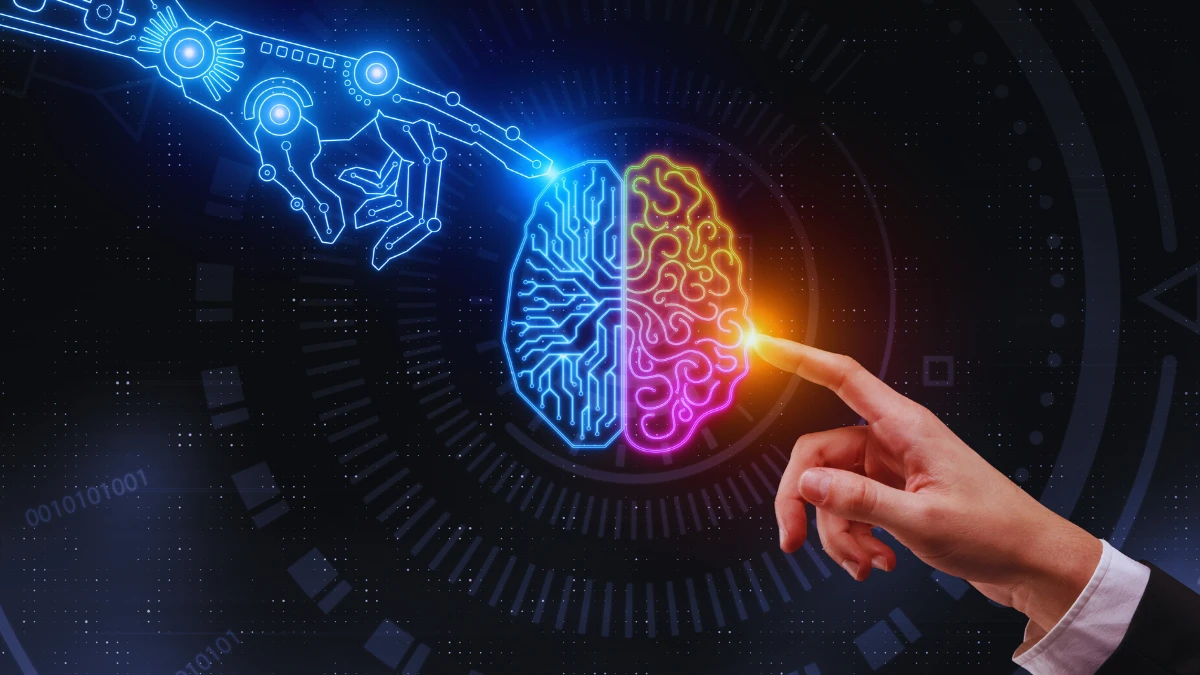Are you feeling lost in the AI technology storm? Imagine investing time and money in an AI solution, only to find yourself trapped by skyrocketing costs, limited flexibility, and opaque development practices.
The battle between open-source AI and Big Tech’s proprietary models is heating up, and the stakes have never been higher. By 2025, the landscape will look dramatically different.
This article cuts through the noise, revealing which AI approach will empower businesses, developers, and innovators. Get ready for a roadmap that could save you thousands and revolutionize your technological strategy.

1. Cost Efficiency and Accessibility

Open-source AI models are reshaping economic landscapes for technology adoption. Small businesses and startups can now access advanced machine learning capabilities without massive upfront investments.
Companies like DeepSeek have demonstrated remarkable cost efficiency, offering performance comparable to expensive proprietary models at a fraction of the price. Their R1 model achieves competitive results while maintaining API costs around $2.19 per million tokens.
Strategic pricing disrupts traditional market dynamics. Developers and organizations no longer need substantial financial resources to experiment with cutting-edge AI technologies.
Community-driven platforms enable knowledge sharing and collaborative development, further reducing implementation expenses. These approaches democratize technological access, allowing innovators from diverse economic backgrounds to participate in AI advancement.
Conversely, proprietary models still command premium pricing, though Big Tech companies have started adjusting strategies. OpenAI’s significant API fee reductions in 2024 signal increased competition and market pressure.
While enterprise-level solutions remain costly, emerging trends suggest a gradual shift toward more accessible pricing models. Smaller teams and regional developers can now leverage advanced AI capabilities without prohibitive financial constraints.
2. Customization and Flexibility

Modern AI development requires adaptable solutions that match unique organizational requirements. Open-source models like Mistral 7B offer unprecedented transparency, allowing developers to modify underlying architectures.
Research institutions and specialized industries benefit from complete model weight access, enabling precise customizations for complex computational challenges.
Technical teams can now implement targeted modifications without navigating restrictive licensing agreements. Healthcare, finance, and scientific research sectors particularly appreciate this approach, as it allows nuanced adjustments to meet stringent regulatory and ethical standards.
Machine learning engineers can fine-tune models, optimize performance, and integrate specialized datasets with remarkable efficiency.
Proprietary platforms typically provide plug-and-play solutions with limited adaptation potential. While convenient for generalist applications, these models struggle with sector-specific complexities.
Open-source alternatives bridge this gap, offering comprehensive customization frameworks that empower organizations to develop AI solutions precisely aligned with their strategic objectives.
This flexibility represents a significant competitive advantage in rapidly evolving technological landscapes.
3. Performance and Scalability

Technological benchmarks reveal fascinating insights into AI model capabilities. Open-source models like DeepSeek R1 demonstrate remarkable performance, challenging established proprietary solutions across various computational tasks.
Recent evaluations show competitive results in reasoning and complex problem-solving domains, challenging previous assumptions about community-developed technologies.
Specialized edge models exemplify computational efficiency. Phi-4, a lightweight architecture, showcases how smaller models can deliver impressive results with minimal resource consumption.
These innovations prove that performance isn’t solely determined by model size but by intelligent design and targeted optimization strategies. Machine learning researchers continue pushing boundaries, creating increasingly sophisticated algorithms.
Enterprise-grade proprietary platforms maintain advantages in raw computational power and seamless scaling. Microsoft and Google invest billions in developing multi-modal architectures with extensive infrastructure support.
Their solutions integrate smoothly with existing technological ecosystems, providing comprehensive services beyond basic model performance. However, the rapid advancement of open-source alternatives suggests an increasingly competitive landscape.
4. Privacy and Security

Data protection emerges as a critical consideration in AI technology selection. Open-source models like Llama 2 enable organizations to implement self-hosting strategies, ensuring complete control over sensitive information.
Researchers and enterprises can deploy solutions while maintaining strict compliance with global privacy regulations such as GDPR and HIPAA.
Transparency becomes a significant advantage in risk management. Community-driven development allows comprehensive code audits, identifying potential vulnerabilities before widespread implementation.
Small businesses and specialized sectors benefit from this approach, which contrasts sharply with opaque proprietary systems that limit external scrutiny.
Proprietary platforms offer centralized security management with dedicated update mechanisms. Large technology companies invest substantial resources in maintaining robust protection frameworks.
However, concerns persist regarding data usage practices and potential hidden vulnerabilities. Organizations must carefully evaluate trade-offs between convenience and comprehensive privacy controls when selecting AI technologies.
5. Innovation and Collaboration

Community-driven ecosystems represent powerful engines of technological progress. Platforms like Hugging Face facilitate global collaboration, enabling researchers and developers to share knowledge, contribute code, and accelerate machine learning innovations.
Federated learning techniques further enhance collective intelligence, creating distributed model development strategies.
Emerging technologies benefit from decentralized approaches that challenge traditional research paradigms.
Open-source communities can rapidly prototype and implement novel concepts, responding more quickly to emerging technological challenges compared to centralized corporate structures. This agility allows faster experimentation and breakthrough discoveries across multiple domains.
Conversely, proprietary research teams maintain significant advantages through substantial financial investments. Companies like Microsoft and Google allocate billions toward fundamental AI research, developing sophisticated multi-modal architectures.
Their approach enables comprehensive technological exploration with extensive computational resources. Despite substantial corporate investments, collaborative open-source models continue demonstrating remarkable potential for groundbreaking advancements.
6. Domain-Specific SLMs and Use Cases

Small language models represent a transformative approach to artificial intelligence deployment.
TinyLlama and similar lightweight architectures enable sophisticated computational capabilities in resource-constrained environments. Edge computing, Internet of Things (IoT) devices, and mobile applications benefit tremendously from these compact, efficient models.
Specialized domains find unprecedented opportunities through targeted AI solutions. DeepSeek V3 supports multiple low-resource languages, addressing representation gaps in traditional machine-learning frameworks.
Healthcare, scientific research, and regional technological development gain powerful tools for solving complex computational challenges with minimal infrastructure requirements.
Proprietary platforms offer comprehensive vertical enterprise solutions like Salesforce Einstein GPT. These tools provide seamless integration across business workflows, demonstrating multi-modal capabilities.
While open-source models excel in specific, niche applications, enterprise-grade solutions maintain advantages in broad, standardized implementation scenarios. The future likely involves hybrid approaches that combine specialized open-source innovations with robust corporate infrastructure.
RELATED:
7. Ecosystem Integration and Vendor Lock-In

Modern technological ecosystems resemble complex interconnected networks. Open-source solutions prioritize interoperability through frameworks like ONNX and Hugging Face’s libraries.
Developers can seamlessly migrate models across multiple cloud platforms, avoiding restrictive infrastructure constraints. This flexibility empowers organizations to select optimal computational environments without significant reimplementation costs.
Cloud providers increasingly recognize the strategic value of supporting open-source technologies. Amazon Web Services, Google Cloud Platform, and Microsoft Azure now offer robust integration mechanisms for community-developed AI models.
Research institutions and technology startups benefit from these adaptable deployment strategies, reducing barriers to entry and promoting technological innovation across various computational domains.
Proprietary platforms maintain tight ecosystem control through strategic integrations. Microsoft’s GPT-4 Turbo with Azure services demonstrates how corporations create comprehensive technological ecosystems.
While convenient for enterprise clients, these approaches introduce substantial switching expenses. Companies must carefully evaluate long-term technological dependencies, balancing convenience against potential future limitations and increased operational flexibility.
8. Support and Maintenance

Technical support represents a critical consideration in AI technology selection. Open-source communities leverage collaborative troubleshooting mechanisms through platforms like GitHub and specialized forums.
Experienced developers contribute solutions, creating dynamic knowledge repositories that address emerging challenges rapidly and cost-effectively.
Community-driven support models offer unique advantages for technical teams. Rapid problem resolution, transparent communication channels, and collective knowledge sharing characterize these approaches.
Small businesses and research organizations can access sophisticated troubleshooting resources without significant financial investments, democratizing technological problem-solving capabilities.
Enterprise-grade proprietary solutions provide structured support frameworks with guaranteed service level agreements. Professional support teams offer 24/7 assistance, automated updates, and comprehensive maintenance protocols.
While more expensive, these services ensure consistent performance and minimize potential operational disruptions. Technology leaders must carefully balance cost considerations with reliability requirements when selecting support strategies.
RELATED:
9. Ethical Governance and Societal Impact

Artificial intelligence technologies carry profound societal implications. Open-source models enable public scrutiny through transparent development processes, allowing comprehensive ethical assessments.
Researchers can conduct detailed bias audits to identify potential systemic limitations and promote inclusive technological solutions.
Decentralized governance models create opportunities for diverse perspectives in AI development. Community-driven platforms encourage global collaboration, reducing potential cultural and regional biases inherent in centralized technological research.
Academic institutions and independent researchers can contribute meaningful insights, challenging established technological paradigms and promoting more equitable innovation strategies.
Proprietary platforms implement centralized moderation mechanisms to manage potential misuse scenarios. Content filtering systems and robust ethical guidelines help mitigate risks associated with generative AI technologies.
However, closed development processes limit external accountability. Balancing innovation with responsible technological deployment remains a critical challenge for global AI research communities.
RELATED:
10. Regulatory Adaptability

Technology regulation evolves at unprecedented rates across global jurisdictions. Open-source models offer remarkable agility in compliance adaptation.
Organizations can rapidly modify implementations to meet emerging legal requirements, ensuring continuous alignment with regional technological standards and privacy protection frameworks.
Self-hosted solutions enable precise customization for specific regulatory environments. Healthcare, financial services, and government sectors benefit from granular control over data management processes.
Researchers can implement region-specific modifications without navigating complex licensing agreements, promoting technological innovation while maintaining strict compliance standards.
Proprietary platforms require extensive legal teams to manage global regulatory challenges. Large technology corporations invest substantial resources in developing comprehensive compliance frameworks.
While offering pre-certified solutions, these approaches potentially limit technological flexibility. Emerging markets and specialized industries increasingly demand more adaptable regulatory approaches that balance innovation with robust legal protection mechanisms.
11. Environmental Sustainability

Computational technologies consume significant energy resources. Small language models represent a breakthrough in energy-efficient AI development.
Researchers have demonstrated that compact architectures like Phi-4 consume substantially less power compared to traditional large-scale models, promoting more sustainable technological strategies.
Open-source communities prioritize ecological considerations through innovative optimization techniques. Quantization methods and lightweight model designs reduce computational overhead, enabling sophisticated AI capabilities with minimal environmental impact.
Technology leaders increasingly recognize the importance of developing energy-conscious computational solutions that balance performance with ecological responsibility.
Proprietary technology corporations acknowledge environmental challenges through comprehensive sustainability pledges. Microsoft’s commitment to carbon-negative operations by 2030 demonstrates corporate responsibility in technological development.
However, significant disparities remain between ambitious environmental goals and actual implementation strategies. Collaborative approaches between open-source communities and corporate research teams could accelerate meaningful ecological innovations in artificial intelligence technologies.
Tabular Comparison:
| Aspect | Open-Source AI | Big Tech Proprietary Models |
|---|---|---|
| Cost | Low/Free | High Initial Investment |
| Customization | Highly Flexible | Limited Adaptability |
| Performance | Competitive Specialized Tasks | Superior General Capabilities |
| Privacy | Self-Hosted, Transparent | Centralized, Controlled |
| Innovation | Community-Driven | Research Budget Intensive |
| Scalability | Modular, Adaptable | Enterprise-Ready Infrastructures |
| Support | Community Forums | Professional 24/7 Services |
| Use Cases | Niche, Specific Domains | Broad Enterprise Solutions |
| Regulatory Compliance | Agile Adaptation | Pre-Certified Frameworks |
| Market Position | Emerging Challenger | Established Dominance |
| Future Potential | High Growth | Incremental Improvements |
Tired of 9-5 Grind? This Program Could Be Turning Point For Your Financial FREEDOM.

This AI side hustle is specially curated for part-time hustlers and full-time entrepreneurs – you literally need PINTEREST + Canva + ChatGPT to make an extra $5K to $10K monthly with 4-6 hours of weekly work. It’s the most powerful system that’s working right now. This program comes with 3-months of 1:1 Support so there is almost 0.034% chances of failure! START YOUR JOURNEY NOW!

